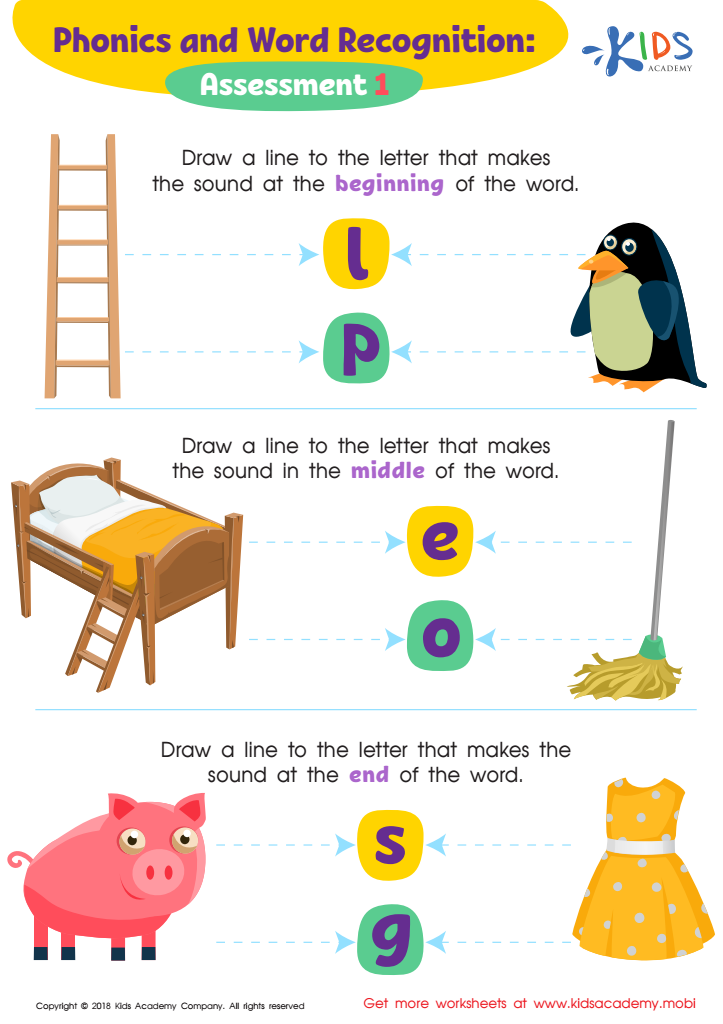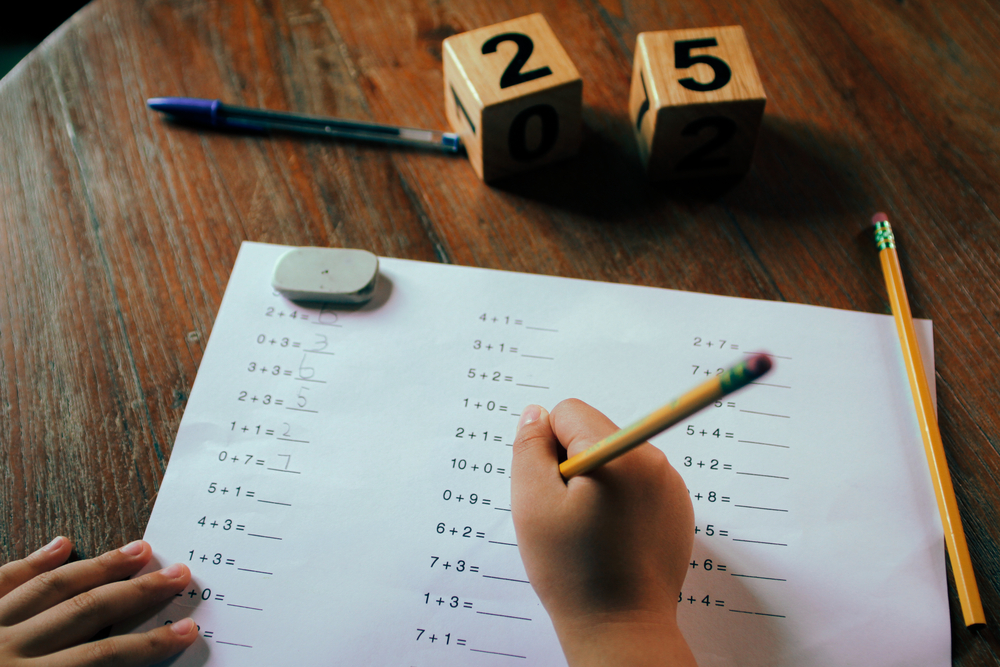Phonics worksheets activities - Page 2
25 filtered results
-
From - To


Phonics and Word Recognition: Assessment 1 ELA Worksheet
Phonics worksheets activities are an essential tool in the foundation of early literacy development. As children embark on their reading journey, understanding the relationship between letters and sounds is crucial. Phonics worksheets activities facilitate this learning process, making them not only useful but indispensable for young learners.
Firstly, Phonics worksheets activities provide a structured approach to learning. They systematically introduce children to the sounds that letters and combinations of letters make. This step-by-step method ensures that learners grasp the basics of phonics in an organized manner, which is vital for building a solid literacy foundation. Through repetitive practice, children become familiar with phonetic sounds, enhancing their ability to decode words independently.
Moreover, Phonics worksheets activities cater to various learning styles. Whether a child is a visual, auditory, or kinesthetic learner, worksheets can be tailored to meet their individual needs. For visual learners, colorful images and letters help in associating sounds with symbols. Auditory learners benefit from saying the sounds out loud, while kinesthetic learners can engage in tracing and writing activities. This versatility ensures that every child has the opportunity to learn in a way that best suits them.
Additionally, Phonics worksheets activities encourage active participation and engagement. Unlike passive learning methods, these activities require children to interact with the material, whether through coloring, matching, or writing exercises. This hands-on approach fosters a deeper understanding of phonics principles and keeps children motivated and interested in the learning process.
Furthermore, Phonics worksheets activities offer immediate feedback. As children complete these exercises, they can quickly ascertain whether they have grasped the concepts or need further practice. This instant feedback loop is invaluable for both learners and educators, allowing for timely intervention and support where necessary.
In conclusion, Phonics worksheets activities are a fundamental component of literacy education. They provide a structured, versatile, engaging, and feedback-oriented approach to learning phonics, making them an indispensable tool in teaching children to read. By incorporating these activities into the learning curriculum, educators can ensure that children develop a strong phonetic foundation, setting them on the path to reading success.
 Assign to the classroom
Assign to the classroom





.jpg)






